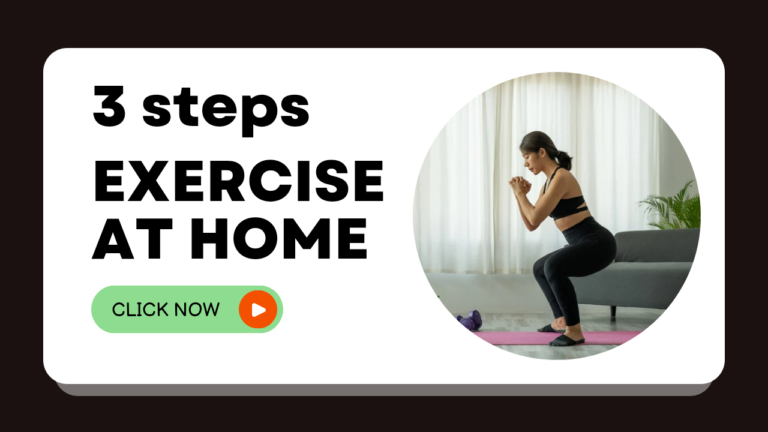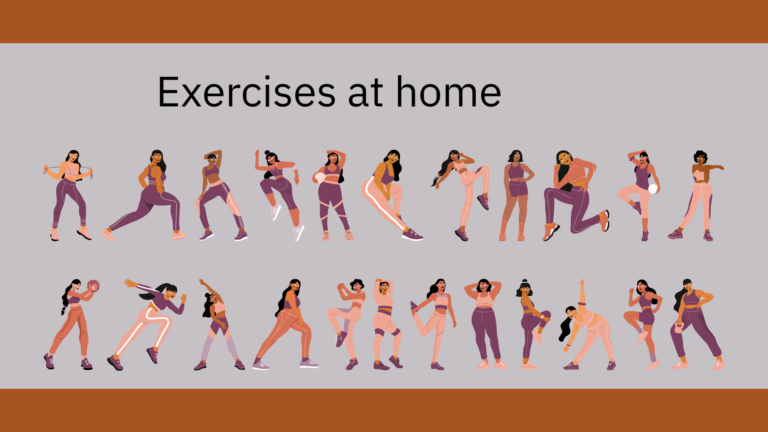From Couch Potato to Gym Rat: Transforming Your Body with Exercise: only introduction
Title: From Couch Potato to Gym Rat: Transforming Your Body with Exercise
Introduction:
In a world where sedentary lifestyles and constant technological engagement prevail, the quest for physical fitness often takes a back seat. Many of us find ourselves comfortably settled into the role of a ‘couch potato,’ inadvertently neglecting our body’s need for movement and exercise. However, the power to transform our physical well-being lies within our grasp.
The journey from a sedentary lifestyle to an active, healthy one may seem daunting. But rest assured, it is an achievable and fulfilling endeavor. With commitment, dedication, and a structured approach, anyone can transition from being a ‘couch potato’ to becoming a ‘gym rat’—someone who embraces the benefits of regular exercise and its transformative impact on the body and mind.
This guide aims to serve as your roadmap, offering insights, tips, and strategies to help you embark on this transformative journey. We’ll explore the benefits of exercise beyond just physical appearance, delve into various workout routines suitable for different fitness levels, discuss the importance of nutrition, and provide practical advice to overcome common obstacles encountered along the way.
Whether your goal is to shed excess weight, build muscle, improve flexibility, enhance mental clarity, or simply lead a healthier lifestyle, this guide is designed to empower you. Remember, the key lies not only in starting but in maintaining consistency and finding joy in the process.
So, let’s lace up our sneakers, break free from the inertia of a sedentary lifestyle, and discover the incredible potential our bodies hold. Together, we’ll explore how the journey from being a ‘couch potato’ to a dedicated ‘gym rat’ can pave the way for a happier, healthier, and more vibrant life.
Transform Your Body with Regular Physical Activity
Regular physical activity holds the transformative power to reshape not only your body but also your entire lifestyle. The human body thrives on movement, and incorporating consistent exercise into your routine can yield remarkable changes that extend beyond mere physical appearance. Whether you’re aiming to lose weight, build muscle, boost energy levels, or enhance overall well-being, regular physical activity can be the cornerstone of your transformation journey.
- Weight Management: Engaging in regular physical activity, be it through cardio exercises, strength training, or a combination of both, can assist in weight management. It helps burn calories, sheds excess fat, and boosts metabolism, contributing to achieving and maintaining a healthy weight.
- Improved Muscle Strength and Tone: Strength training exercises, such as lifting weights or bodyweight exercises like push-ups and squats, help in building and toning muscles. Strong muscles not only contribute to a toned appearance but also aid in better posture and reduced risk of injuries.
- Enhanced Cardiovascular Health: Activities like brisk walking, jogging, cycling, or swimming elevate the heart rate, strengthening the heart and improving overall cardiovascular health. Regular cardiovascular exercise can reduce the risk of heart diseases, lower blood pressure, and improve circulation.
- Mental Well-being: Physical activity has a profound impact on mental health. It releases endorphins, often referred to as ‘feel-good hormones,’ reducing stress, anxiety, and symptoms of depression. Exercise can also improve cognitive function and boost self-esteem.
- Increased Energy and Stamina: Over time, regular exercise enhances endurance and overall stamina. It increases the body’s efficiency in using oxygen and nutrients, resulting in increased energy levels and reduced fatigue.
- Better Sleep: Establishing a regular exercise routine can positively influence sleep patterns. Quality sleep is crucial for overall health, and exercise aids in falling asleep faster and experiencing deeper, more restorative sleep.
- Reduced Risk of Chronic Diseases: Engaging in physical activity regularly lowers the risk of developing various chronic diseases such as type 2 diabetes, certain cancers, and osteoporosis.
To experience these transformative benefits, consistency is key. Aim for at least 150 minutes of moderate-intensity aerobic activity or 75 minutes of vigorous-intensity aerobic activity per week, combined with muscle-strengthening activities on two or more days a week.
Remember, it’s essential to choose activities you enjoy to maintain long-term adherence. Consult with a healthcare professional before starting any new exercise regimen, especially if you have underlying health conditions. With dedication and perseverance, regular physical activity can be the catalyst for a profound transformation in both body and mind.
Strength Training: An Essential Part of Your Workout
Strength training stands as a fundamental pillar of any well-rounded fitness regimen, offering a multitude of benefits that extend beyond just building muscle. Incorporating strength training into your workout routine not only enhances physical strength but also contributes significantly to overall health and well-being.
- Muscle Development and Tone: Strength training involves using resistance to stimulate muscle growth and development. Over time, this leads to increased muscle mass, improved muscle tone, and enhanced overall strength. This not only contributes to a more sculpted appearance but also aids in better functional movement in daily activities.
- Boosts Metabolism: Muscles are metabolically active tissues. As you build muscle through strength training, your resting metabolic rate increases, allowing you to burn more calories even at rest. This can be beneficial for weight management and maintaining a healthy body composition.
- Enhanced Bone Health: Weight-bearing exercises, a key component of strength training, help in stimulating bone growth and density. This is particularly important in preventing osteoporosis and reducing the risk of fractures, especially as you age.
- Improved Joint Health and Flexibility: Strength training exercises that involve proper form and controlled movements can improve joint stability, flexibility, and range of motion. This can alleviate joint pain and reduce the risk of injury.
- Enhanced Physical Performance: Stronger muscles contribute to improved performance in various physical activities and sports. Whether it’s lifting heavier weights, running faster, or simply performing daily tasks with more ease, strength training plays a significant role in enhancing physical performance.
- Enhanced Mental Well-being: Strength training not only benefits the body but also has positive effects on mental health. It can reduce symptoms of anxiety and depression while enhancing self-esteem and overall mood.
When incorporating strength training into your routine, focus on targeting major muscle groups such as legs, back, chest, shoulders, arms, and core. Use a variety of exercises that utilize different equipment like free weights, resistance bands, or machines to ensure a well-rounded workout.
It’s important to start with proper form and gradually increase the intensity and weight as your strength improves. Consistency is key, so aim for at least two to three strength training sessions per week, allowing adequate rest days in between for muscle recovery.
Consulting a fitness professional or personal trainer can be immensely helpful, especially if you’re new to strength training or need guidance on creating a personalized program tailored to your fitness goals and abilities.
Remember, incorporating strength training into your fitness routine can lead to a stronger, healthier body and significantly contribute to an overall improvement in your quality of life.
Endurance: The Key to Long-Term Fitness Success
Endurance serves as a cornerstone in achieving long-term fitness success, encompassing both physical and mental resilience. It’s the ability to sustain prolonged physical activity, but more importantly, it’s the perseverance and mental fortitude to overcome challenges and maintain consistency in your fitness journey. Developing endurance can benefit various aspects of your life and fitness routine.
- Improved Cardiovascular Health: Endurance activities, such as running, cycling, swimming, or brisk walking, elevate heart rate and breathing over an extended period. Consistent participation in such activities strengthens the heart, enhances lung capacity, and improves overall cardiovascular health.
- Enhanced Stamina: Building endurance gradually increases your stamina, allowing you to perform physical tasks for longer periods without fatigue. Whether it’s a long-distance run, a challenging hike, or everyday activities, improved stamina helps you endure and perform better.
- Burns Calories and Aids in Weight Management: Endurance exercises, especially those of moderate to high intensity, help burn significant calories. This can aid in weight management and fat loss when combined with a balanced diet, contributing to achieving fitness goals.
- Mental Resilience and Focus: Endurance activities require mental resilience to push through discomfort and fatigue. Over time, this builds mental toughness, discipline, and focus, not just in fitness but in various aspects of life.
- Reduces Stress and Boosts Mood: Endurance exercises release endorphins, the body’s natural feel-good hormones, reducing stress and improving mood. Regular participation in endurance activities can positively impact mental well-being and reduce symptoms of anxiety and depression.
- Enhances Overall Fitness Level: Improving endurance leads to an overall increase in fitness levels. It strengthens muscles, improves coordination, and enhances overall athletic performance.
To develop endurance, gradually increase the duration, intensity, or frequency of your chosen endurance activity. Consistency is crucial—aim for regular sessions to build stamina progressively. Incorporate variety into your workouts to prevent monotony and overuse injuries.
Cross-training, which involves mixing different types of exercises, can be beneficial. For example, combining cardio, strength training, and flexibility exercises helps build a balanced and well-rounded fitness routine while reducing the risk of overtraining or burnout.
Always prioritize proper warm-ups, cool-downs, and adequate rest between sessions to allow your body time to recover and adapt. Additionally, listen to your body and adjust your routine as needed to prevent overexertion or injury.
Endurance is not just about physical capability; it’s a mindset. Embrace the challenges, stay committed, and celebrate the progress along the way. Developing endurance lays the foundation for sustainable, long-term fitness success and an overall healthier lifestyle.
Flexibility: More Than Just Stretching
Flexibility, often associated with stretching, encompasses far more than just reaching for your toes. It refers to the range of motion of your joints and muscles, and it plays a crucial role in overall health, fitness, and daily activities. Embracing and improving flexibility offers numerous benefits beyond simple stretches.
- Enhanced Range of Motion: Improved flexibility allows your joints to move through their full range of motion. This can be particularly beneficial in activities requiring agility, like sports or even routine tasks such as bending, reaching, or lifting.
- Reduced Risk of Injury: Flexible muscles and tendons are less prone to strains, sprains, and other injuries. By increasing the elasticity of muscles and connective tissues, flexibility training helps protect against injuries during physical activities.
- Improved Posture and Balance: Flexibility contributes to better posture and alignment of the body. It reduces muscle tension, allowing for a more upright stance, which in turn improves balance and reduces the likelihood of falls, especially in older adults.
- Alleviation of Aches and Pains: Improved flexibility can alleviate muscular tension and reduce aches and pains, particularly in areas like the lower back, shoulders, and neck, which are common areas of discomfort due to poor posture or sedentary lifestyles.
- Enhanced Athletic Performance: Athletes benefit significantly from flexibility, as it improves overall performance in various sports by enabling smoother and more efficient movements.
- Stress Relief and Relaxation: Stretching and flexibility exercises can induce relaxation, reduce stress, and calm the mind. Incorporating these practices into your routine can promote mental well-being.
To improve flexibility, incorporate various stretching techniques into your fitness regimen:
- Static Stretching: Holding a stretch in a comfortable position for a specific duration (e.g., hamstring stretch).
- Dynamic Stretching: Moving through a range of motion to improve flexibility (e.g., leg swings or arm circles).
- Yoga and Pilates: These practices combine flexibility, strength, and balance exercises.
- Foam Rolling and Mobility Work: Using foam rollers or mobility tools can release tension and improve flexibility.
Consistency is key when it comes to flexibility training. Aim for regular stretching sessions, ideally after a warm-up or at the end of your workout when muscles are warm. Gradually increase the duration and intensity of your stretches to avoid overexertion or injury.
Remember, flexibility is not solely about touching your toes; it’s about functional mobility and overall wellness. Incorporating flexibility exercises into your routine can enhance your quality of life by improving movement, reducing injury risk, and promoting a healthier, more balanced lifestyle.
Explore Various Workouts to Keep Things Interesting
Keeping your workout routine varied and interesting is not only beneficial for physical progress but also crucial for maintaining motivation and preventing boredom. There’s a wide array of workouts and exercises available, catering to different preferences, fitness levels, and goals. Mixing up your routine can keep things fresh and enjoyable. Here are several diverse workout options to explore:
- High-Intensity Interval Training (HIIT): HIIT involves short bursts of intense exercise followed by brief recovery periods. It’s an efficient way to burn calories, improve cardiovascular fitness, and boost metabolism in a shorter amount of time.
- Strength Training with Free Weights: Incorporate exercises using dumbbells, barbells, or kettlebells to target specific muscle groups. Compound movements like squats, deadlifts, and bench presses engage multiple muscles simultaneously, promoting strength and muscle growth.
- Bodyweight Exercises: No equipment? No problem. Bodyweight exercises like push-ups, lunges, planks, and burpees are effective for building strength, improving endurance, and enhancing flexibility—all using your body’s weight as resistance.
- Yoga and Pilates: These practices focus on flexibility, core strength, balance, and mindfulness. Yoga emphasizes stretching and relaxation, while Pilates focuses on core strength and stability.
- Cardio Workouts: There are numerous options for cardiovascular exercises, including running, cycling, swimming, jumping rope, dancing, or participating in aerobics or Zumba classes. Choose activities you enjoy to make cardio workouts more engaging.
- Sports and Recreational Activities: Engaging in sports such as basketball, tennis, soccer, or recreational activities like hiking, rock climbing, or kayaking not only provides a great workout but also adds an element of fun and social interaction.
- Group Fitness Classes: Joining group classes like spinning, kickboxing, CrossFit, or boot camps can add variety to your routine while offering the motivation of a group setting and the guidance of an instructor.
- Mind-Body Practices: Consider incorporating mind-body exercises like Tai Chi or Qigong, which combine movement, meditation, and deep breathing for overall well-being.
- Functional Training: Mimic real-life movements with functional exercises that improve everyday activities, such as carrying groceries, lifting objects, or improving balance and coordination.
- Circuit Training: Design a circuit of exercises targeting different muscle groups, performing each exercise one after the other with minimal rest. It’s an effective way to improve strength, endurance, and cardiovascular fitness.
Rotate through these different workouts throughout the week to keep things interesting. Listen to your body and choose activities that align with your fitness goals, preferences, and current fitness level. The key is to maintain consistency while exploring various exercises to challenge yourself and prevent workout monotony.
Building an Effective Exercise Routine
Creating an effective exercise routine involves a thoughtful combination of various elements to target different aspects of fitness. Here’s a step-by-step guide to building a well-rounded exercise regimen:
- Set Clear Goals: Define your fitness objectives. Whether it’s weight loss, muscle gain, improved endurance, or overall health, having specific goals will guide your routine.
- Consider Your Schedule: Determine how many days a week you can dedicate to exercise and the duration of each session. Factor in rest days for recovery, as they are crucial for muscle repair and growth.
- Incorporate Cardiovascular Exercise: Include activities that elevate your heart rate, such as running, cycling, swimming, or brisk walking. Aim for at least 150 minutes of moderate-intensity aerobic activity per week or 75 minutes of vigorous-intensity activity.
- Integrate Strength Training: Schedule sessions for resistance training to build muscle and increase strength. Focus on major muscle groups with exercises like squats, deadlifts, push-ups, and rows. Aim for two to three strength training sessions per week.
- Prioritize Flexibility and Mobility: Dedicate time to stretching and flexibility exercises to improve range of motion and prevent injuries. Incorporate yoga, Pilates, or dedicated stretching routines into your schedule.
- Include Variety: Keep your routine diverse and engaging. Mix up workouts with different activities, such as HIIT sessions, bodyweight exercises, sports, or group fitness classes. This prevents boredom and ensures you target various muscle groups.
- Progression and Challenges: Regularly progress your workouts by increasing intensity, duration, or resistance. This progression ensures continuous improvements and prevents plateaus.
- Warm-Up and Cool Down: Always begin with a warm-up to prepare your body for exercise and reduce the risk of injury. Likewise, cool down with stretches to help your muscles recover and improve flexibility.
- Listen to Your Body: Pay attention to how your body responds to exercise. Adjust your routine as needed to accommodate recovery or avoid overtraining. Rest when necessary and prioritize sleep for proper recovery.
- Track Your Progress: Keep a workout journal or use fitness apps to track your workouts, progress, and achievements. This can help you stay motivated and monitor your advancements over time.
- Consult a Professional: If you’re new to exercise or have specific health concerns, consider consulting a fitness trainer or healthcare professional to create a safe and effective routine tailored to your needs.
Remember, the most effective routine is one that you can maintain consistently and that aligns with your goals. It’s essential to enjoy your workouts to ensure long-term adherence. Regularly reassess and modify your routine to keep it challenging and enjoyable, ensuring continued progress toward your fitness goals.
Physical Activity: Beyond the Gym
Absolutely, physical activity extends far beyond the confines of a gym or structured workout routine. Incorporating movement into your daily life in various forms can contribute significantly to your overall health and well-being. Here are ways to stay active outside the gym:
- Outdoor Activities: Engage in outdoor pursuits such as hiking, cycling, jogging, or walking in nature. These activities not only provide exercise but also offer the benefits of fresh air and exposure to natural surroundings.
- Household Chores: Activities like gardening, vacuuming, mopping, or doing yard work involve physical movement and contribute to burning calories while improving your living environment.
- Active Commuting: Consider walking, cycling, or using public transportation that involves walking to increase daily physical activity instead of driving for short distances.
- Taking the Stairs: Opt for stairs instead of elevators or escalators whenever possible. Climbing stairs is an excellent way to engage multiple muscle groups and get the heart pumping.
- Dance and Movement: Put on your favorite music and dance around the house. Dancing is a fun and effective way to burn calories while improving coordination and lifting your mood.
- Recreational Sports: Participate in sports activities like basketball, soccer, tennis, or volleyball with friends or join local recreational leagues to stay active and have fun.
- Play with Pets or Children: Playing fetch with a dog, playing tag, or engaging in other activities with kids not only fosters bonding but also keeps you moving and active.
- Active Leisure: opt for leisure activities that involve physical movement, such as yoga in the park, beach volleyball, or paddle boarding, to combine relaxation with exercise.
- Fitness Apps and Online Workouts: Utilize fitness apps or online workout videos that offer guided exercises you can do anywhere, whether it’s in a park, at home, or while traveling.
- Standing and Stretching Breaks: Incorporate short breaks throughout the day to stand, stretch, or take a short walk, especially if you have a sedentary job or spend extended periods sitting.
The key to staying active outside the gym is to find activities you enjoy and integrate them into your daily routine. Consistency matters more than the specific activity, so aim to move more throughout the day, whether it’s through planned workouts or simple lifestyle changes that prioritize movement. Remember, every bit of physical activity adds up and contributes to your overall health and fitness.
Cross-Training: The Best of Both Worlds
Cross-training involves incorporating a variety of different workouts and exercises into your fitness routine, combining various activities to target different muscle groups, energy systems, and fitness components. This approach not only prevents boredom but also offers a range of benefits, making it an effective way to achieve overall fitness. Here’s why cross-training is considered the best of both worlds:
- Reduces Risk of Overuse Injuries: By engaging in different activities, you minimize the risk of overusing specific muscles or joints. This helps in preventing injuries associated with repetitive motions common in single-focused training.
- Enhances Overall Fitness: Cross-training allows you to improve multiple aspects of fitness simultaneously. It can improve cardiovascular endurance, strength, flexibility, balance, and agility, leading to a well-rounded fitness profile.
- Improves Performance: Training in different ways challenges your body in diverse ways, leading to improved performance in various activities. For example, strength training can complement running by enhancing muscular endurance and reducing the risk of fatigue.
- Breaks Plateaus and Boredom: Variety keeps workouts interesting and prevents boredom. It also helps break through plateaus by introducing new challenges and stimuli to the body.
- Balances Muscle Development: Incorporating different exercises ensures that all muscle groups are targeted, preventing muscle imbalances that can lead to poor posture and injury.
- Enhances Recovery: Engaging in different activities gives specific muscles and joints time to recover while still staying active. For instance, cycling or swimming can provide low-impact exercise on rest days from high-impact activities like running or weightlifting.
When creating a cross-training regimen, consider these tips:
- Diversify Your Activities: Include a mix of aerobic exercises (running, cycling, swimming), strength training (weightlifting, bodyweight exercises), flexibility work (yoga, stretching), and other activities you enjoy.
- Plan and Schedule: Allocate specific days or time slots for different types of workouts to ensure a balanced routine. For example, designate certain days for cardio, strength training, and flexibility work.
- Progress Gradually: Introduce new activities gradually to allow your body to adapt. Start with manageable intensity and duration before increasing the challenge.
- Listen to Your Body: Pay attention to how your body responds to different activities. If something causes discomfort or pain, modify the activity or seek guidance from a fitness professional.
Cross-training offers versatility and flexibility in your fitness routine. By embracing a diverse range of exercises and activities, you can optimize your fitness, improve performance, and enjoy the journey toward a healthier, more active lifestyle.
Aerobics: Fun and Fitness Combined
Aerobics is a dynamic and enjoyable form of exercise that combines rhythmic movements with music, creating a fun and effective workout experience. It involves continuous, rhythmic activities that elevate the heart rate and increase oxygen circulation throughout the body. Here’s why aerobics is known for blending fun and fitness:
- Cardiovascular Benefits: Aerobic exercises, like dancing, step aerobics, or aerobic routines, get your heart pumping and your lungs working, improving cardiovascular fitness. This form of exercise strengthens the heart and improves circulation, reducing the risk of heart disease.
- Calorie Burning and Weight Management: Aerobics is an excellent way to burn calories and aid in weight management. Depending on the intensity, it can burn a significant amount of calories per session, helping to create a calorie deficit necessary for weight loss.
- Enhanced Endurance: Regular participation in aerobics improves endurance and stamina, allowing you to sustain physical activity for more extended periods without fatigue.
- Mood Booster: Aerobic exercises release endorphins, the body’s natural feel-good hormones, leading to an improved mood and reduced stress levels. The combination of music, movement, and social interaction often associated with aerobics contributes to its mood-enhancing effects.
- Improved Coordination and Balance: Many aerobic routines involve choreographed movements that enhance coordination, balance, and agility. Over time, this can lead to better overall body control and posture.
- Social Engagement: Aerobic classes often create a social atmosphere where participants can connect, making it a great way to meet new people and create a sense of community while working out.
- Versatility: There’s a wide variety of aerobic exercises available, allowing you to choose activities that suit your preferences and fitness level. From dance-based aerobics to step aerobics or high-energy aerobics classes, there’s something for everyone.
When participating in aerobics:
- Warm-Up and Cool Down: Always start with a warm-up to prepare your body for the workout, and conclude with a cool-down to gradually bring your heart rate back to normal and prevent muscle soreness.
- Proper Form: Focus on maintaining proper form during movements to prevent injuries. Follow the instructor’s cues and pay attention to your posture and alignment.
- Hydration and Rest: Stay hydrated before, during, and after the workout. Allow your body adequate rest and recovery time between sessions to prevent overuse injuries.
Whether in a group class or following an online aerobics routine, the combination of music, movement, and camaraderie in aerobics makes it an enjoyable way to boost fitness while having fun.
HIIT: A Time-Efficient Workout Strategy
High-Intensity Interval Training (HIIT) is a highly efficient workout strategy that alternates between short bursts of intense exercise and brief periods of rest or low-intensity activity. This training method offers numerous benefits and is known for its time efficiency. Here’s why HIIT is a popular and effective workout approach:
- Time-Saving: HIIT workouts are typically shorter in duration compared to traditional steady-state cardio workouts. A typical session can range from 10 to 30 minutes, making it ideal for those with busy schedules.
- Effective Calorie Burn: HIIT workouts maximize calorie burning in a short time. The intense bursts of activity followed by brief recovery periods increase the body’s calorie expenditure even after the workout, thanks to the “afterburn effect” or excess post-exercise oxygen consumption (EPOC).
- Improved Cardiovascular Health: HIIT improves cardiovascular fitness by challenging the heart and lungs through intervals of high-intensity exercise. It enhances both aerobic and anaerobic capacity, improving overall endurance.
- Muscle Building and Fat Loss: HIIT workouts not only burn fat but also help preserve muscle mass. This is beneficial for those looking to lose weight while maintaining or increasing muscle tone.
- Metabolic Benefits: HIIT has been shown to improve insulin sensitivity, which can help regulate blood sugar levels, reduce the risk of type 2 diabetes, and improve metabolic health.
- Adaptability and Variety: HIIT workouts can be adapted to various exercises and formats, such as cycling, running, bodyweight exercises, or circuit training. This versatility allows for a wide range of workouts to prevent boredom and keep the routine challenging.
- Convenience: HIIT can be done anywhere with minimal or no equipment. This flexibility makes it accessible for individuals who prefer home workouts or have limited access to a gym.
When incorporating HIIT into your routine:
- Start Gradually: If you’re new to HIIT, begin with shorter intervals and lower intensity to allow your body to adapt. Gradually increase the intensity and duration as you build stamina and fitness.
- Proper Warm-Up and Cool Down: Always start with a warm-up to prepare your body for the high-intensity intervals, and end with a cool-down to allow your heart rate to gradually return to normal and prevent injury.
- Hydration and Rest: Stay hydrated throughout the workout and after. Ensure adequate rest between HIIT sessions to allow for recovery, as these workouts can be demanding on the body.
- Combine with Other Training: HIIT can be combined with other forms of exercise, such as strength training or steady-state cardio, for a well-rounded fitness routine.
HIIT offers an efficient and effective way to improve fitness, burn calories, and boost overall health in a short amount of time. However, it’s essential to tailor HIIT workouts to your fitness level and listen to your body to prevent overexertion and injury.
Conclusion
In the pursuit of a healthier lifestyle, the journey from a sedentary routine to an active and vibrant one is an incredibly rewarding transformation. Throughout this exploration, we’ve uncovered various avenues to achieve fitness goals, embracing diverse workout strategies and activities that transcend the boundaries of traditional exercise.
From the foundational importance of strength training to the invigorating realms of HIIT and the rhythmic joy of aerobics, the spectrum of fitness possibilities is vast and adaptable. Recognizing the significance of endurance, flexibility, and cross-training, we’ve come to understand that true fitness is a culmination of diverse elements harmonizing together.
Physical activity extends far beyond the confines of a gym, encompassing the outdoors, household chores, recreational pursuits, and even the simple joy of movement. It’s a lifestyle woven into the fabric of our daily lives, bringing energy, vitality, and balance.
Whether it’s the efficiency of a time-conscious HIIT session or the rhythmic harmony of an aerobics class, each form of exercise contributes uniquely to our physical, mental, and emotional well-being. They offer not only tangible benefits such as improved cardiovascular health, strength, and flexibility but also intangible rewards like boosted mood, reduced stress, and enhanced quality of life.
As we conclude this journey, let’s remember that the path to a healthier lifestyle is not about adhering to a rigid regimen, but rather embracing a sustainable and enjoyable routine. It’s about finding activities that resonate with us, allowing us to thrive, and creating a lifelong commitment to well-being.
May this holistic approach to fitness empower you to continue exploring, adapting, and cherishing the diverse facets of physical activity, fostering a balanced and fulfilling life where movement becomes an integral part of your everyday journey towards vitality and health.







